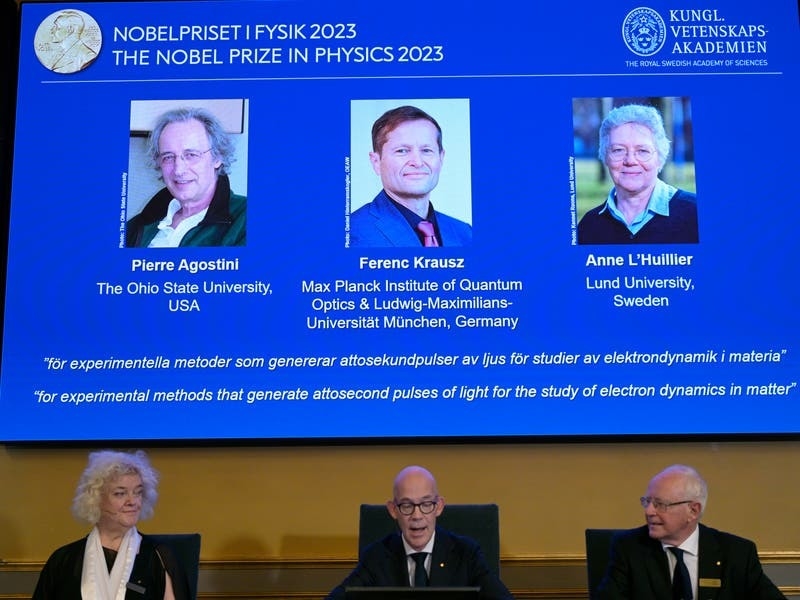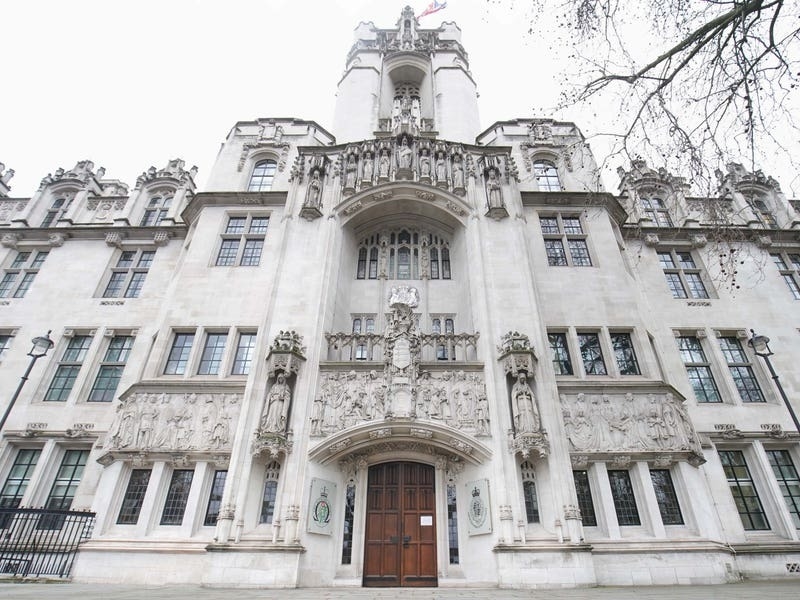The Nobel Prize in physics has been awarded to three scientists who look at electrons in atoms during the tiniest of split seconds.
Pierre Agostini of Ohio State University in the US; Ferenc Krausz of the Max Planck Institute of Quantum Optics and Ludwig Maximilian University of Munich in Germany; and Anne L’Huillier of Lund University in Sweden won the award.
The Royal Swedish Academy of Sciences, which announced the prize in Stockholm, said their experiments “have given humanity new tools for exploring the world of electrons inside atoms and molecules”.
BREAKING NEWSThe Royal Swedish Academy of Sciences has decided to award the 2023 #NobelPrize in Physics to Pierre Agostini, Ferenc Krausz and Anne L’Huillier “for experimental methods that generate attosecond pulses of light for the study of electron dynamics in matter.” pic.twitter.com/6sPjl1FFzv
— The Nobel Prize (@NobelPrize) October 3, 2023
It said they “have demonstrated a way to create extremely short pulses of light that can be used to measure the rapid processes in which electrons move or change energy”.
At the moment, this science is about understanding our universe rather than practical applications, but the hope is that it will eventually lead to better electronics and disease diagnosis.
“Attosecond science allows us to address fundamental questions such as the time scale of the photoelectric effect for which Einstein, Albert Einstein, received the Nobel Prize in physics in 1921,” according to Eva Olsson, chairwoman of the Nobel Committee for Physics.
The Nobel Prizes carry a cash award of 11 million Swedish kronor (£830,000). The money comes from a bequest left by the prize’s creator, Swedish inventor Alfred Nobel, who died in 1896.

The physics prize comes a day after Hungarian-American Katalin Kariko and American Drew Weissman won the Nobel Prize in medicine for discoveries that enabled the creation of mRNA vaccines against Covid-19.
Nobel announcements will continue with the chemistry prize on Wednesday and the literature prize on Thursday. The Nobel Peace Prize will be announced on Friday and the economics award on October 9.
The laureates are invited to receive their awards at ceremonies on December 10, the anniversary of Nobel’s death. The prestigious peace prize is handed out in Oslo, according to his wishes, while the other award ceremony is held in Stockholm.






